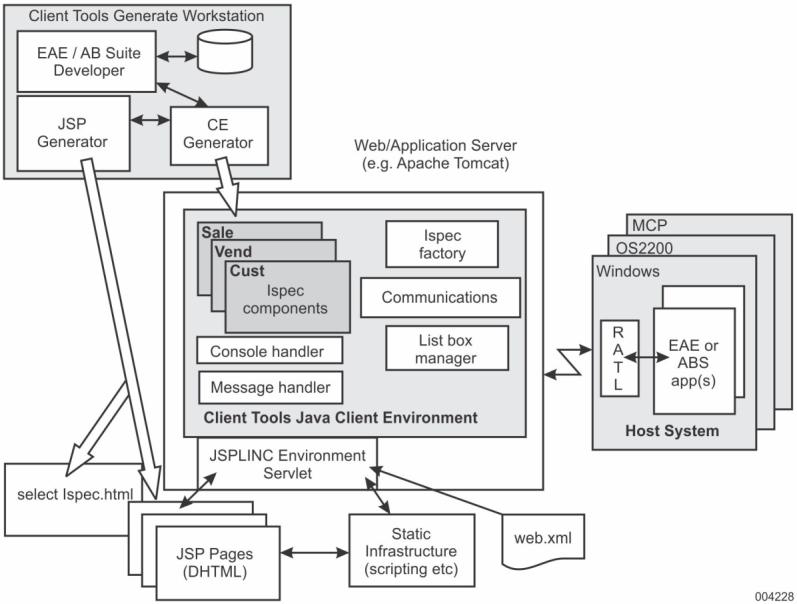The following diagram describes the generation and deployment environments for a JSP client application:
When a client browser connects for the first time to the web server, the web server locates the file global.jsp, which contains session startup and shutdown logic for the JSP application. At the start of a new session, the server executes the getConnection() routine that creates an instance of the LINCEnvironment object, once the connection to the host is successful.
The LINCEnvironment object connects to the Host system, which returns a fireup Ispec. The getConnection routine then stores the LINCEnvironment object in the session object once the connection to the host is successful.
The JSP Web Page is specific to an Ispec, and contains information about the content and presentation of each field. When the JSP Web Page is loaded, the Transaction method is called to process the Ispec data received from the Host system. The LINCEnvironment object is retrieved from the Session object for the browser, and it retrieves all the data for the fields. The Transaction method passes the data to the host and receives the response code sent by the host, and if there is any error during the transaction it sends the response to the error page.
The browser reads the HTML to present an interactive GUI Form for the user.
When the user completes the transaction, the Form is transmitted to the web server and intercepted by the java class, LINCTransaction. The LINCTransaction class gathers data from all the fields submitted to it and calls Component Enabler methods to set the data.
Using the Component Enabler Java Runtime interface, the data is sent to the Host system, which responds with an Ispec. The name of the Ispec is retrieved (which might be different from the original Ispec), and processing is redirected to the individual JSP Web Page for that Ispec.
The process is then repeated.
